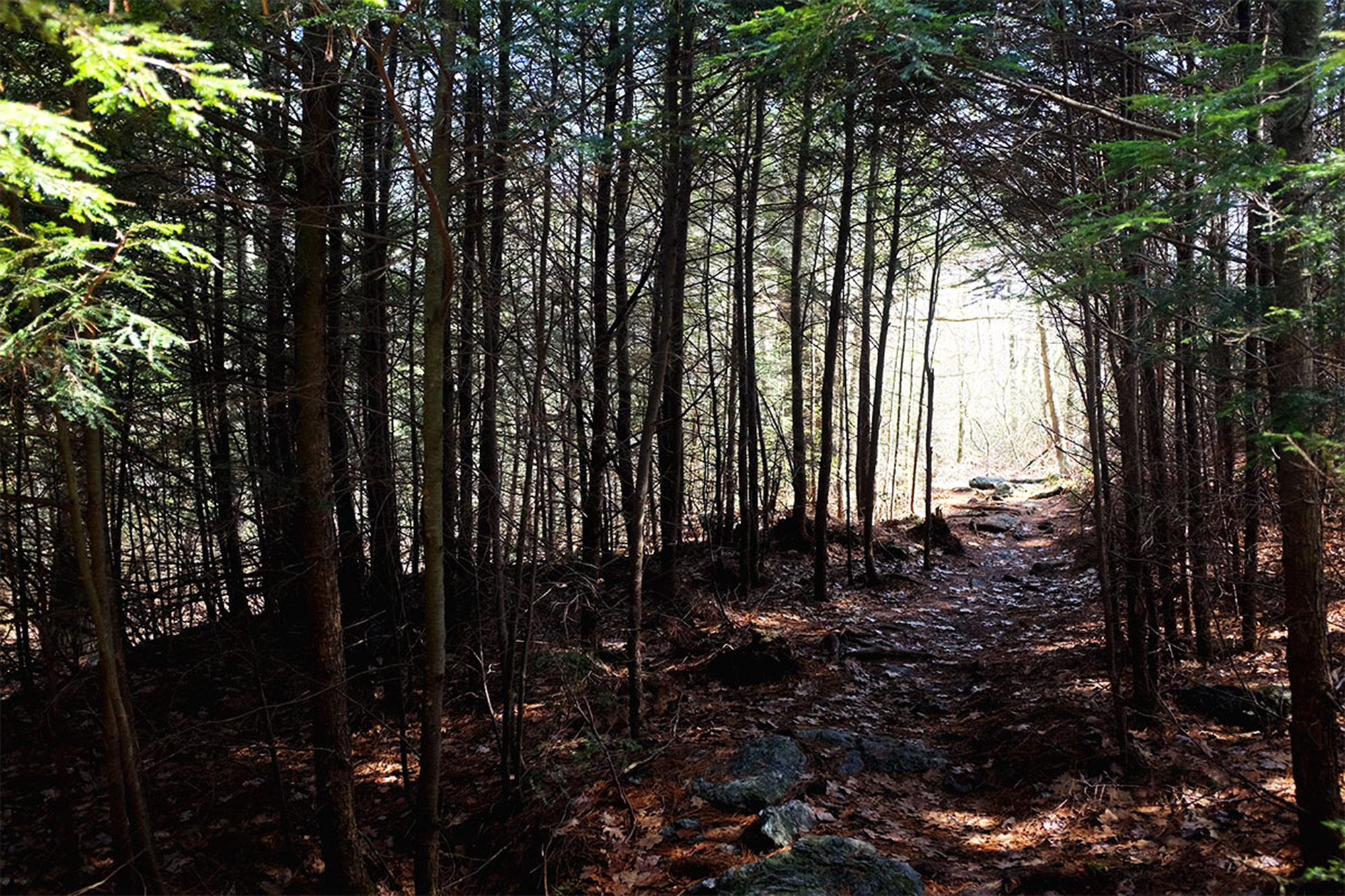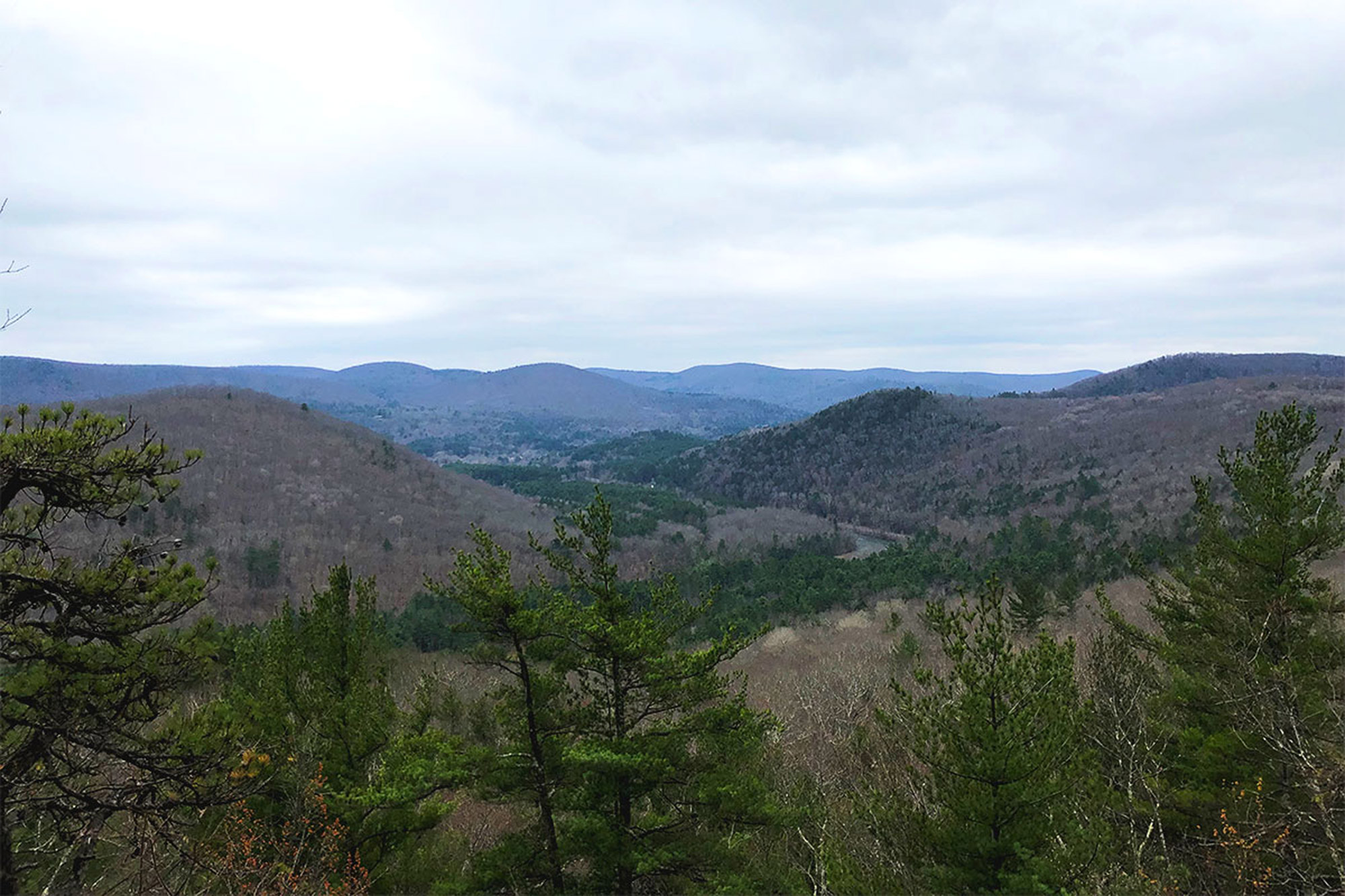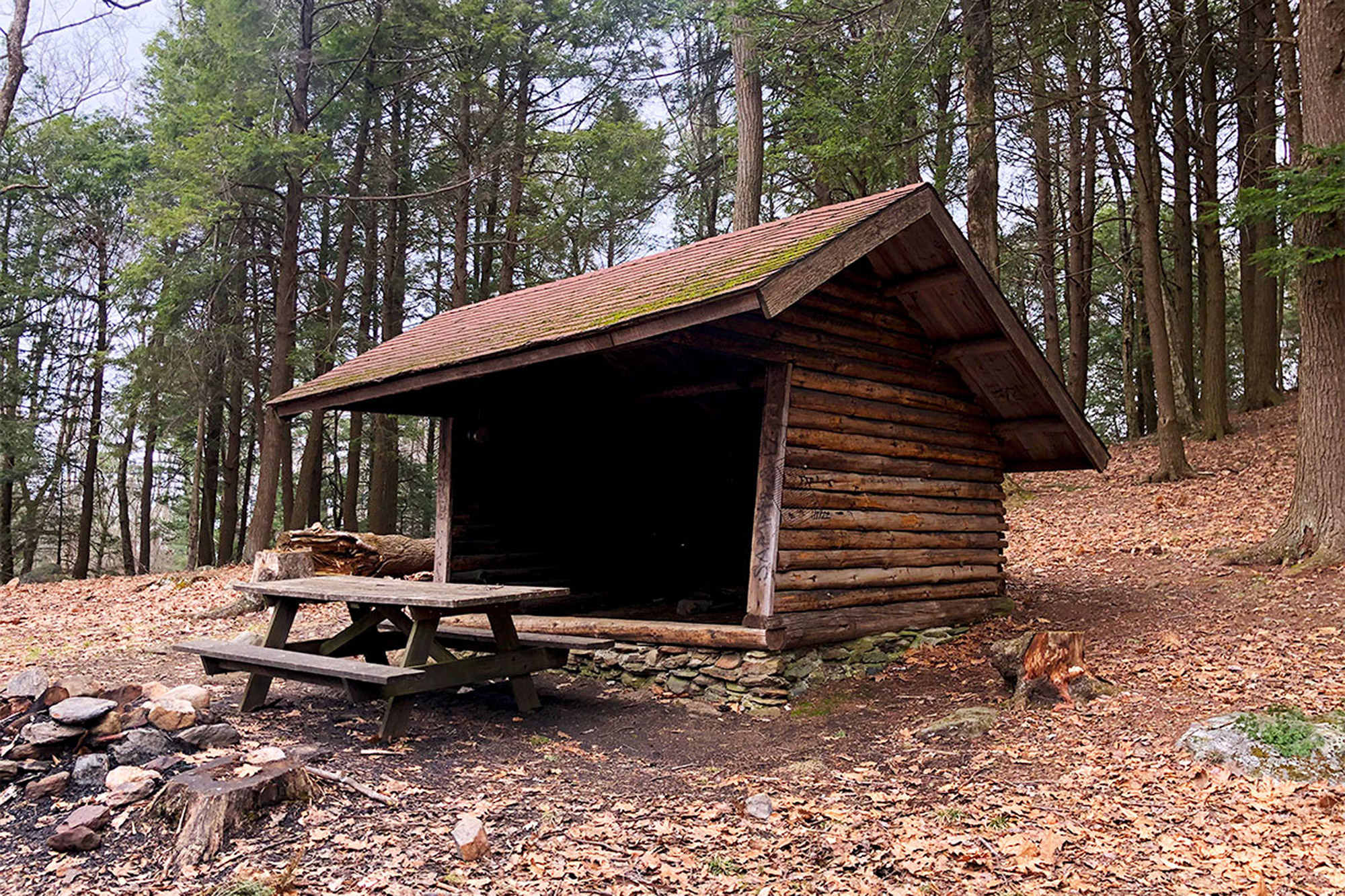The transition from winter is an awakening of the senses in the forest. The din of a pond teeming with newly-roused frogs, the impossibly clean aroma of snowmelt-swollen brooks mixed with budding flora, and the warmth of the sun on bare skin as it makes its way through the still leafless trees. These are the harbingers of spring, invigorating signs that we can go outside again.
Early season outings have their advantages and chief among them is the temperature: it’s not frigid, but not sweltering either. It’s warm enough to shed some of the heavier winter gear but it’s cool enough to keep the bugs and the crowds at bay. It’s also a time when water is plentiful, and a trail that might be dry as a bone in high summer will yield more than enough to keep that filter pumping.
On the flip side, being out in the spring in the northeast means you’re going to get wet. Wherever you’re going, bring rain gear, good (waterproof) footwear, and a change of clothes to stay dry in camp. Breaking out the hammock in lieu of a tent—and getting out of the mud—is also a smart move this time of year.
Any way you look at it though, it’s great to get back out there. Here are some tips on what to look for when selecting a spring backpacking trip.

Stay Low
For the high peaks of the Northeast, winter is a very long season where snow, ice, and some nasty chill can hang around until late. Ergo, if spring is what you’re looking for in a backpacking trip, it’s best to stick to lower elevations where the warmer temperatures creep in first. Fortunately, the Northeast boasts more than a few lowland backpacking routes, each with their own degree of natural splendor, rugged wilderness, and physical challenge. Spring will inevitably come for the mountains of the Adirondacks or the Whites, but in the meantime, the valleys are where you can find the change of season.
Cranberry Lake 50, Adirondacks
Located far in the northwestern corner of the Adirondack State Park, Cranberry Lake and its namesake hiking trail offer one of the top lowland wilderness experiences in the Northeast. Ample camping, arresting vistas, and real remoteness make this 50-mile loop hike a legitimate classic. Do it in early spring before the bugs wake up.
Lower Pemigewasset Loop, White Mountains
While the traditional Pemi Loop traverses the great ridges and summits of the Pemigewasset Wilderness, the lowland route—linking the Franconia Brook and Lincoln Brook Trails in an 18-mile loop around Owl’s Head with an overnight at Thirteen Falls Tentsite—is a wild, super remote alternative. Be prepared for a lot of water and know how to make a crossing safely.

Southern Exposure
Spring’s claim on the region moves from south to north, making landfall along Long Island Sound long before the snow starts to melt in the Great North Woods. This is great news for those hardy lovers of the cold among us, as the combination of elevation and location work to extend the ice climbing and skiing seasons well beyond the calendar’s winter. If that’s not your game, it’s best you turn your eyes to the south: friendlier climates make destinations like the Catskills, the Taconics, and the Poconos perfect for that first big trip of the season.
South Taconic Trail, Taconic Range
Stretching 16 miles along the New York–Massachusetts border, the South Taconic Trail is a gem of a hike all-too-often overlooked by the area’s backpackers. Steep climbs are rewarded with grassy summit balds and panoramic views atop Brace and Alander Mountains, and cool side trips—like the New York–Connecticut–Massachusetts boundary marker and Bash Bish Falls—make for a great weekend outing.
Burroughs Range Traverse, Catskills
Doable as a 10-mile shuttle or a 15-mile loop, the Burroughs Range is a Catskills classic that bags three peaks above 3,500 feet: Wittenberg, Cornell, and the tallest of them all, Slide. The opening climb is steep but gains what’s arguably the best summit view in the region. Beyond that is a rugged ridge walk that includes the Cornell Crack: a fun—and tricky—semi-technical rock obstacle.

Seek Shelter
Another excellent way to open the spring hiking season is by zeroing in on trails that have a good network of shelters. Backcountry shelters can vary greatly, from the full service huts of the Appalachian Mountain Club to the humble, trailside lean-to. Lean-tos are typically three-sided structures with a roof—just enough to keep you out of the temperamental early-spring weather and up off of the mud. Even on chillier nights, they can be down right cozy with a tarp lashed over the opening (though you should check with the land manager so make sure this is allowed—In the Adirondacks, closing off lean-tos is forbidden). Shelters are regular occurrences on long-distance trails, so Northeastern stand-bys like the AT is a good place to start.
AT–Mohawk Loop, Connecticut
This scenic hike in Connecticut’s rural Northwest Corner connects the Appalachian Trails of old and new—the blue-blazed Mohawk Trail actually follows the original path of the AT prior to being rerouted west of the Housatonic River in 1970’s—to make a 40-mile loop. The trip is replete with shelters, campsites and stellar views of the Litchfield Hills.
Harriman–Bear Mountain State Parks, Hudson Highlands
Despite being within an hour of New York City, Harriman and Bear Mountain State Parks offer wilderness, an extensive network of trails and abundant shelters fit for overnight trips of any size. Link the AT with the Ramapo–Dunderberg, Long Path, and Red Cross Trails for a 22-mile loop that takes in some of the park’s greatest hits including an incredibly tight scramble, aptly named the “Lemon Squeezer.”
What are your favorite early-season backpacking locations? Let us know in the comments!
John Lepak
John Lepak is an art director, graphic designer, and weekend mountaineer. He hasn’t met a rock scramble he didn’t like, and spends his free time either in the mountains or obsessively cooking Mexican food. When John isn’t pushing pixels, crushing miles, or making the best carnitas caseras you’ve ever tasted, you can find him living the dream in the Connecticut woods with his family. Follow him at @jhlepak.
Related Posts
April 12, 2024
Explore Like a Local: The Outdoor Mecca of North Conway, NH
There's a lot to love about this New…
April 3, 2024
5 Things To Do in the Boston Area During Mud Season
Adventure opportunities are abundant…
April 2, 2024
10 Tips for Mountain Biking Etiquette During Mud Season
One rough spring could ruin the…




